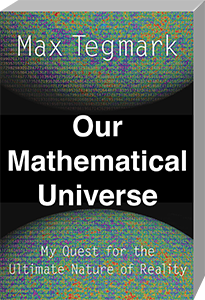The new book by Sean Carroll, Something Deeply Hidden: Quantum Worlds and the Emergence of Spacetime, is probably the single best argument for the Everett understanding of quantum mechanics.
That’s the approach named after physicist Hugh Everett III and which is often also called (although slightly misleadingly) the “Many Worlds Interpretation”.
In his book, Carroll makes clear the powerful attractions of the Everett understanding, and persuasively counters the objections that are commonly raised against it. He highlights how this approach is the natural, straightforward response to the extraordinary success of the quantum formalism. Despite its apparent profligacy of multiple worlds (multiple diverging branches of reality), it’s actually a lean and austere interpretation of quantum mechanics. Unique among interpretations of quantum mechanics, it adds in nothing beyond the wave equation itself.
Back in the 1980s I spent four years mulling the philosophical implications of quantum mechanics. Over time, against my initial inclinations (and hopes), I came to have an increasing respect for the Everett understanding – an outcome I wrote about here. Alongside my grudging respect for that interpretation, I retained the view that it still faced many hard questions. However, Carroll’s book has convinced me that these questions aren’t particularly daunting. In other words, the book has strengthened my conviction that these “Many Worlds” do come into being whenever quantum transactions are macroscopically magnified.
In terms of the history of the topics covered, and the pros and cons of the different interpretations reviewed, I see Carroll as being overwhelmingly correct. I particularly liked his demolition of the idea that there’s such a thing as a coherent “Copenhagen interpretation” of quantum mechanics. The only area where I wanted to see the argument extended was that more could have been said about how all the non-Everett interpretations of quantum mechanics have to accept one or other kind of radical non-locality (despite the attempts of various writers to “have their cake and eat it”).
The final third of the book may be the most important. It reviews the possibility for progress in an area of physics that has long experienced troubles: quantum gravity. Carroll argues that the best hopes for us obtaining a correct quantum theory of gravity (that works at all energy scales) is to take quantum mechanics itself more seriously. This part of the book is more speculative than the earlier parts, but it has raised my interest in delving more into these topics.
This final part of the book also underlines the difficulties faced by the non-Everett interpretations of quantum mechanics in dealing, not with particles, but with the relativistic fields which modern physics views as being more fundamental than particles. This part also reviews how space and time should emerge from the theory of quantum gravity, rather than being presupposed as the canvas upon which the theory would operate. Some of the potential implications for black holes (and maybe even the Big Bang) are mind-stretching.
It’s a shocking possibility that each of us exist alongside numerous different versions of ourselves, in the overall multiverse – versions that have increasingly divergent experiences. I see this possibility as one of the most remarkable insights to have arisen from humanity’s millennia-long exploration into science. It’s an insight that takes time to sink in. It’s a good question how much this insight should change our day-to-day behaviour. Carroll has an answer to that too: not as much as we might first think. Personally I find it a humbling realisation.
PS For another book that addresses some of the same topics – inside an even larger set of profound ideas – I recommend Our Mathematical Universe by Max Tegmark.



